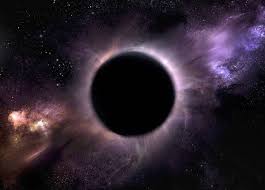Context:
Recently, Indian scientists have used the country’s largest optical telescope to study a rare type of black hole, known as an Intermediate-Mass Black Hole (IMBH).
More on the Discovery
The team used the 3.6-meter Devasthal Optical Telescope (DOT), India’s largest, and a smaller 1.3-meter telescope at the same location.
They also used an indigenously developed spectrograph and camera, Aries-Devasthal Faint Object Spectrograph & Camera (ADFOSC).
Since the region around a black hole is extremely difficult to observe directly, the team used a technique called Spectrophotometric Reverberation Mapping:

- This technique measures the delay between light emitted from the black hole’s accretion disk and the reflected light from surrounding gas clouds (broad-line region).
- The time lag helps estimate the size of the surrounding region and calculate the black hole’s mass.
They observed the black hole over two nights using both telescopes.
They found this black hole in a faint galaxy called NGC 4395, located about 4.3 million light-years away.
The gas clouds orbit the Black Hole at a distance of 125 light-minutes (around 2.25 billion km) with a speed of 545 km/sec.
The study, published in the Astrophysical Journal, confirm the size-luminosity relationship for black holes in low-luminosity active galaxies.
Significance of the discovery
- This black hole is special because it’s not too small or too big — it weighs about 22,000 times that of the Sun, making it one of the most precisely measured IMBHs to date.
- These “middleweight” black holes are believed to be the missing link between small black holes and giant ones found at the centers of galaxies.
- This discovery helps confirm how the size and brightness of black holes are related in faint galaxies.
About the Black hole
- A black hole is an astronomical object with a gravitational pull so strong that nothing, not even light, can escape it.
- A black hole’s “surface,” called its event horizon, defines the boundary where the velocity needed to escape exceeds the speed of light, which is the speed limit of the cosmos.
- These objects aren’t holes. They’re huge concentrations of matter packed into very tiny spaces.
Types of black holes
Stellar black holes:

- Stellar-mass black holes are formed when a single star collapses under its own gravity.
- They can also form from the merger of two neutron stars.
- As a result, stellar-mass black holes have masses similar to those of stars.
- Their mass typically ranges from a few times the mass to potentially hundreds of times the of our Sun, depending on growth through collisions.
Supermassive black holes:
- Supermassive black holes typically range from hundreds of thousands to billions of times the mass of our Sun, though some definitions start as low as tens of thousands.
- They are too massive to have formed from the collapse of a single star.
- Scientists do not yet know exactly how supermassive black holes are formed.
- These black holes are always found at the center of a galaxy and almost all galaxies have a supermassive black hole at its center.
Intermediate black holes:
- Intermediate-mass black holes (IMBHs) are a type of black hole with masses between 100 and 100,000 times that of the Sun.
- They bridge the gap between stellar-mass black holes (formed from the collapse of massive stars) and supermassive black holes (found at the centers of galaxies).
Miniature (or primordial) black holes:
- Primordial black holes are hypothetical black holes that may have formed in the first second after the Big Bang, with masses ranging from far less than a paperclip to much more than the Sun.
- Some could be extremely small, but not necessarily the size of an atom.
Mains practice Question
Q: Examine the observational challenges associated with detecting Intermediate-Mass Black Holes (IMBHs) and assess their significance in the evolutionary pathway leading to supermassive black holes.

